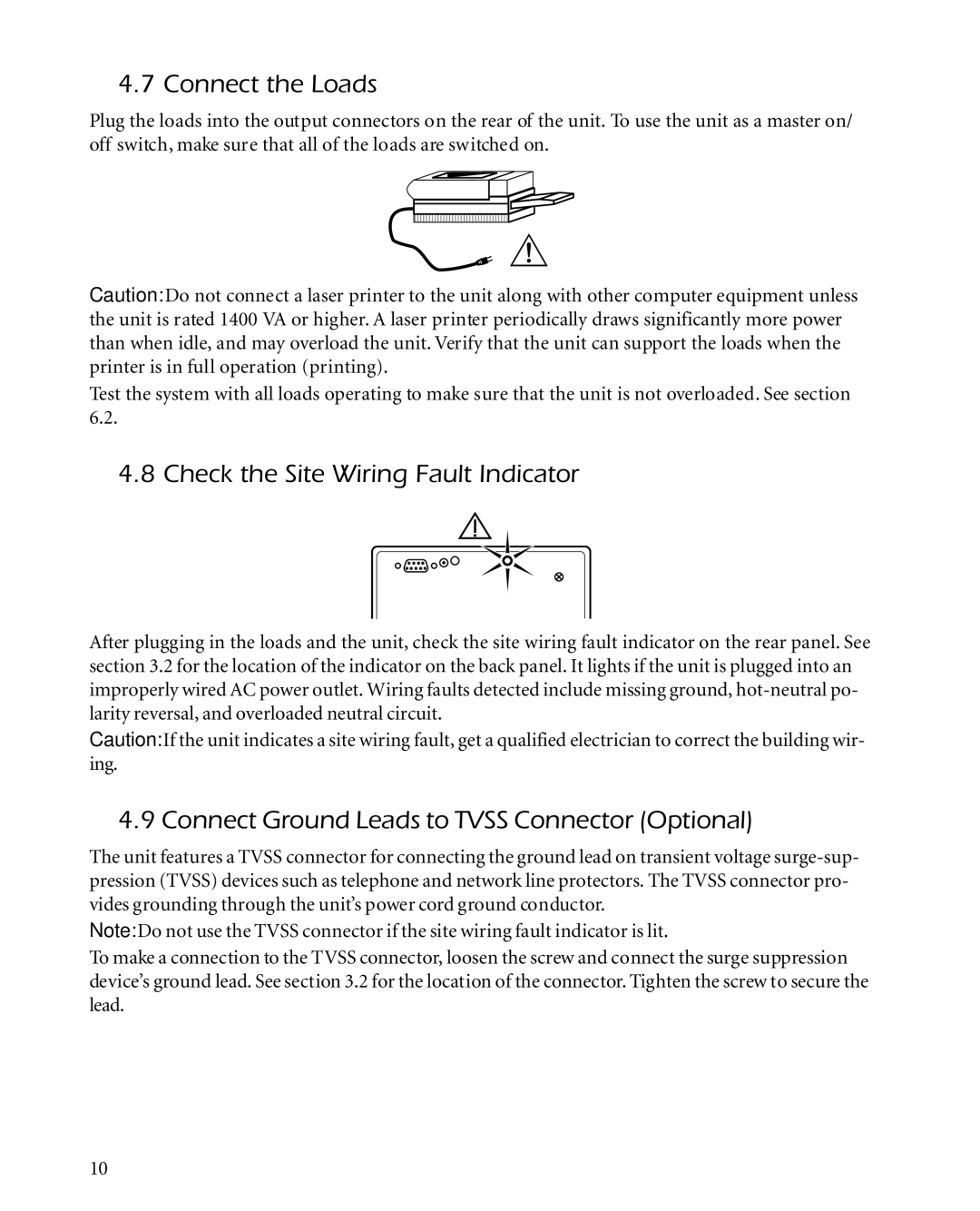
4.7 Connect the Loads
Plug the loads into the output connectors on the rear of the unit. To use the unit as a master on/ off switch, make sure that all of the loads are switched on.
Caution: Do not connect a laser printer to the unit along with other computer equipment unless the unit is rated 1400 VA or higher. A laser printer periodically draws significantly more power than when idle, and may overload the unit. Verify that the unit can support the loads when the printer is in full operation (printing).
Test the system with all loads operating to make sure that the unit is not overloaded. See section 6.2.
4.8 Check the Site Wiring Fault Indicator
After plugging in the loads and the unit, check the site wiring fault indicator on the rear panel. See section 3.2 for the location of the indicator on the back panel. It lights if the unit is plugged into an improperly wired AC power outlet. Wiring faults detected include missing ground,
Caution: If the unit indicates a site wiring fault, get a qualified electrician to correct the building wir- ing.
4.9 Connect Ground Leads to TVSS Connector (Optional)
The unit features a TVSS connector for connecting the ground lead on transient voltage
Note: Do not use the TVSS connector if the site wiring fault indicator is lit.
To make a connection to the TVSS connector, loosen the screw and connect the surge suppression device’s ground lead. See section 3.2 for the location of the connector. Tighten the screw to secure the lead.
10
